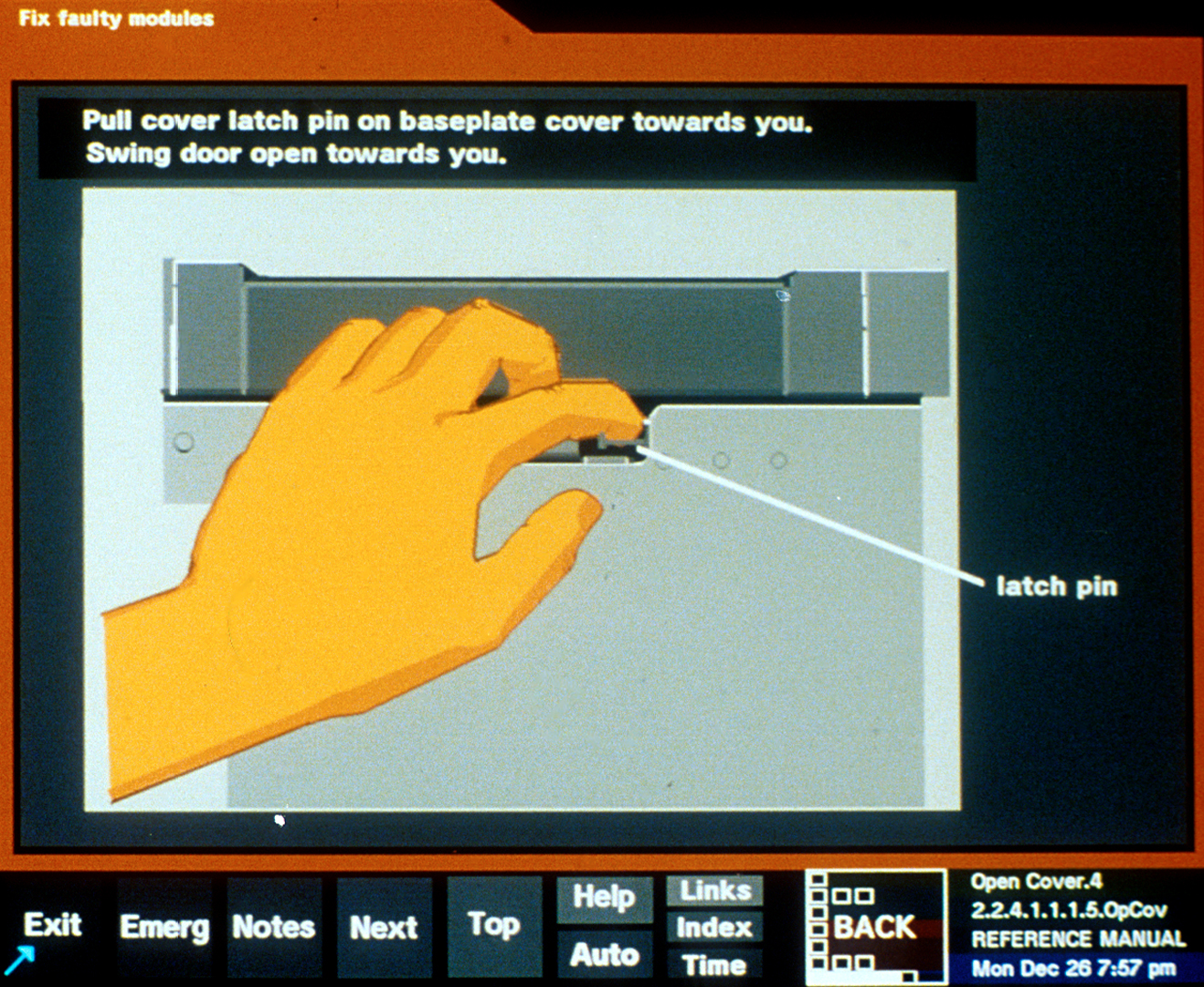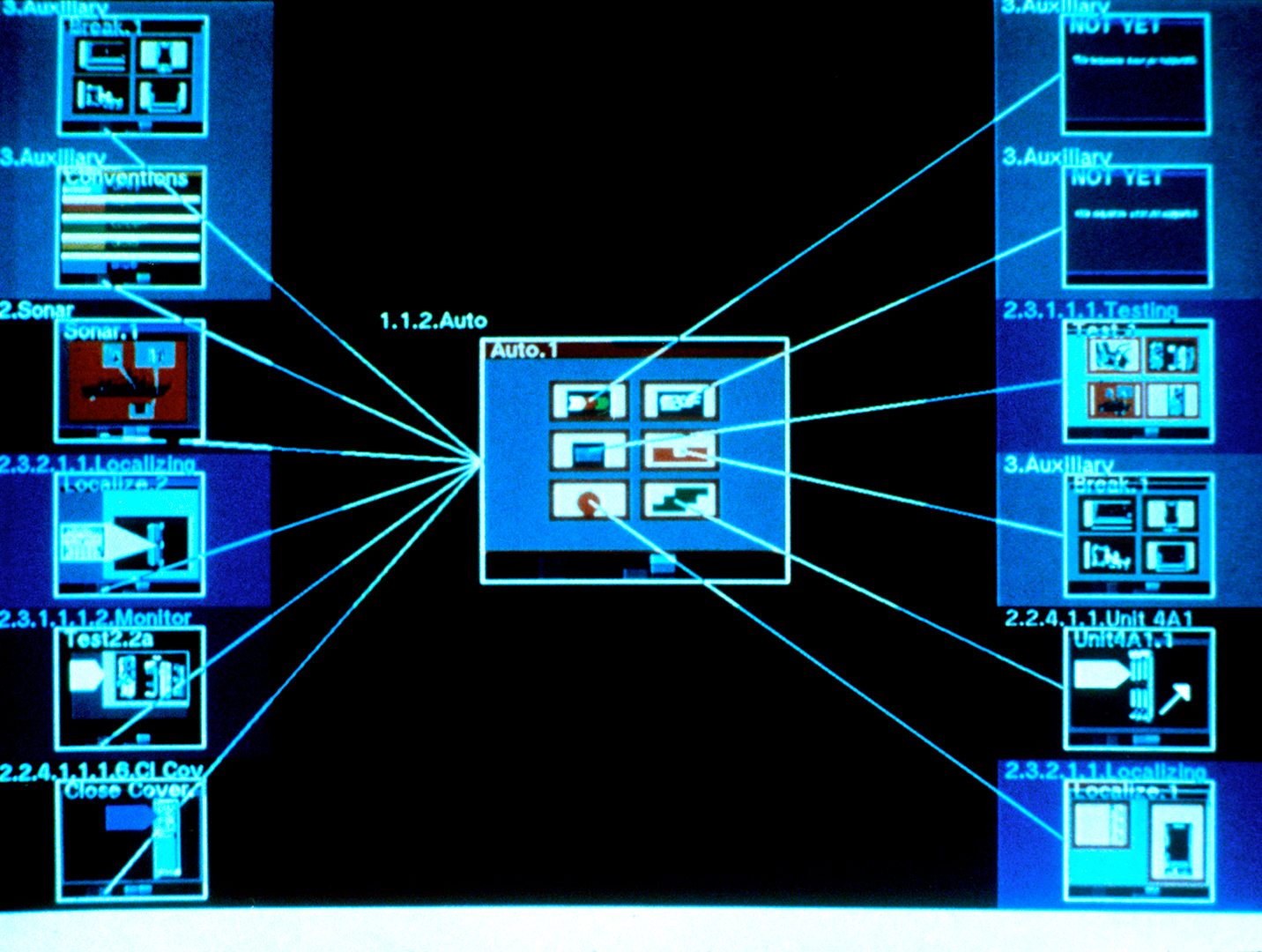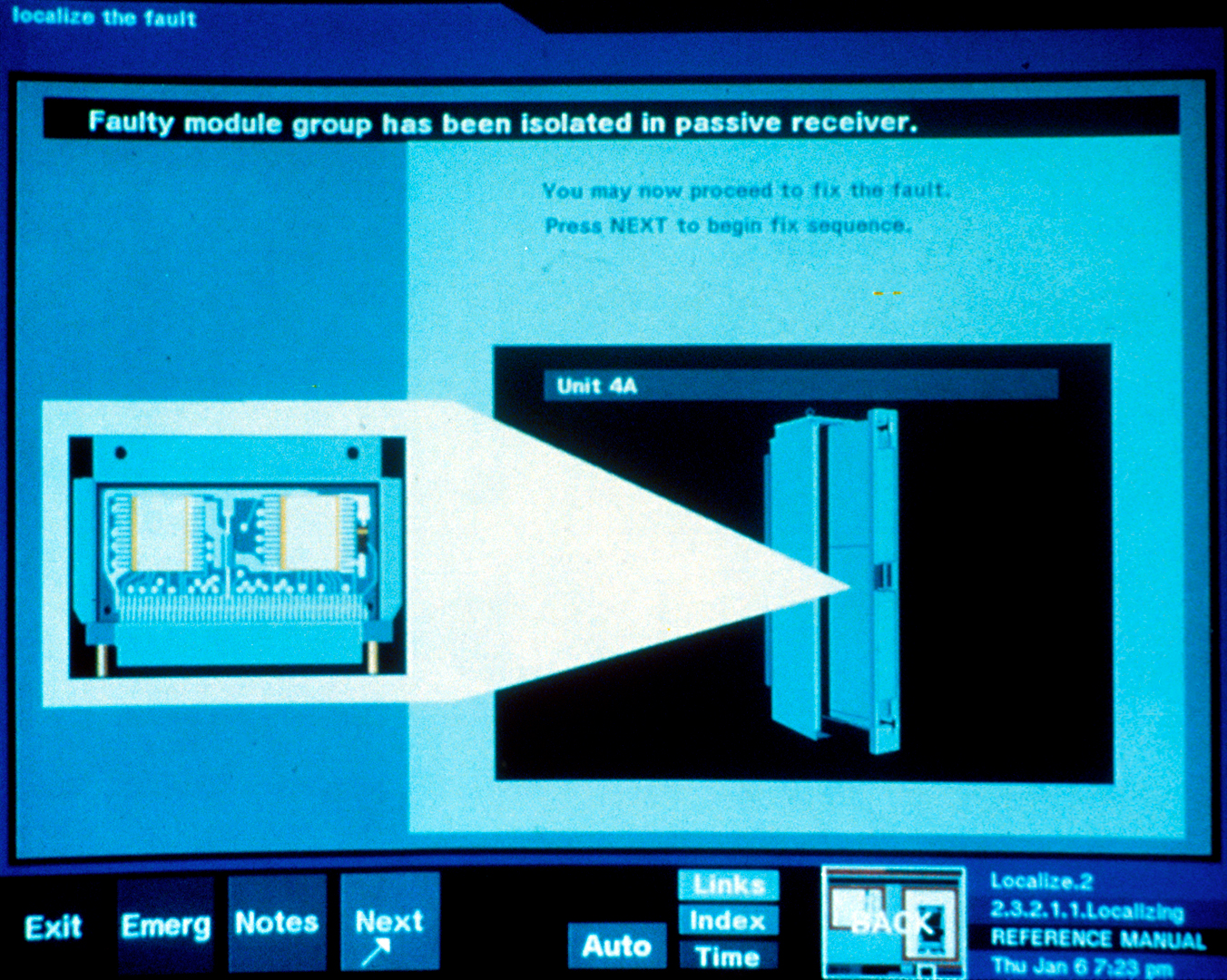Brown University: Electronic Maintenance Manual: Interactive Graphical Documents
Artist(s):
Collaborators:
- Steven Feiner
-
- Brown University
- Randy Pausch
-
- Brown University
- Jerry Weil
-
- Brown University
- David Salesin
-
- Brown University
Title:
- Electronic Maintenance Manual: Interactive Graphical Documents
Exhibition:
Category:
Keywords:
Artist Statement:
This computer-operated maintenance manual is being developed as an instructive, interactive “book” that allows its users to work their way through a complex network of information as they choose, pursuing points of information, or bypassing entire blocks of information.
Using a “Document Layout System” that prescribes page formats, users can also become “authors” who create their own instruction manuals on the system. The manual is organized into “documents” with individual “chapters” and “pages”. As with books, the user can return to earlier pages, scroll forward to later pages, and follow any desired order. “Pages” consist of text, images, or animations, that may branch to new pages, or cause other programs to be run.
The center page is surrounded by miniatures of its predecessors (on the left) and successors (on the right), each of which is nested in a box representing its chapter. Arrows emanate from the center page and from its predecessors and terminate on High-density image storage devices such as video disk, provide the capability to archive, access and traverse massive amounts of graphic and textual information. With these and other tools in place, the design of information for dynamic, two-way communication between a user and computer can result.
Technical Information:
Equipment:
DEC VAX 11/780
Ramtek 9400 graphics system
Matrix Instruments QCR D-4/2 film recorder
Process Information:
Publishing and Print
Publishing and print have been synonymous since the invention of moveable type. Computers and graphics first entered publishing as production tools. As digital communication media replaces print, traditional graphic design principles are being modified and applied to the design and presentation of such things as computer interfaces and programs. High-density image storage devices such as video disk, provide the capability to archive, access and traverse massive amounts of graphic and textual information. With these and other tools in place, the design of information for dynamic, two-way communication between a user and computer can result.
Affiliation Where Artwork Was Created:
- Brown University
Other Information:
Client:
Office of Naval Research
National Science Foundation








